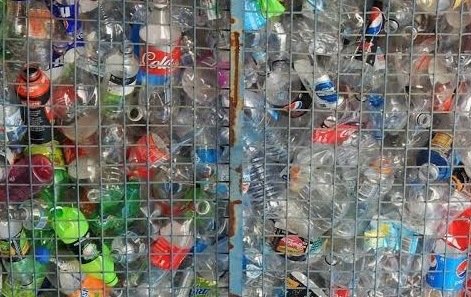Polymerization
In polymer chemistry, polymerization is a process of reacting monomer molecules together in a chemical reaction to form polymer chains or three-dimensional networks. There are many forms of polymerization and different systems exist to categorize them.
(An example of Alkene Polymerization, in which styrene monomer’s double bond reforms as a single bond, plus a bond to another styrene monomer. Product is Polystyrene.)
Introduction
In chemical compounds, polymerization occurs via a variety of reaction mechanisms that vary in complexity due to functional groups present in reacting compounds and their inherent steric effects. In more straightforward polymerization, alkenes, which are relatively stable due to bonding between carbon atoms, form polymers through relatively simple radical reactions; in contrast, more complex reactions such as those that involve substitution at the carbonyl group require more complex synthesis due to the way in which reacting molecules polymerize.
Alkanes can also be polymerized, but only with the help of strong acids. As alkenes can be formed in somewhat straightforward reaction mechanisms, they form useful compounds such as polyethylene and polyvinyl chloride (PVC) when undergoing radical reactions, which are produced in high tonnages each year due to their usefulness in manufacturing processes of commercial products, such as piping, insulation, and packaging. In general, polymers such as PVC are referred to as “homopolymers,” as they consist of repeated long chains or structures of the same monomer unit, whereas polymers that consist of more than one molecule are referred to as copolymers (or co-polymers)
| Homopolymer
D + D + D + D…. = DDDD…..
Copolymer
D + S + D + S…. =DSDS… |
Other monomer units, such as formaldehyde hydrates or simple aldehydes, are able to polymerize themselves at quite low temperatures (ca. −80 °C) to form trimers. Molecules consisting of 3 monomer units, which can cyclize to form ring cyclic structures, or undergo further reactions to form tetramers or 4 monomer-unit compounds.
Further compounds either being referred to as oligomers in smaller molecules. Generally, because formaldehyde is an exceptionally reactive electrophile it allows nucleophilic addition of hemiacetal intermediates, which are in general short-lived and relatively unstable “mid-stage” compounds that react with other molecules present to form more stable polymeric compounds. Polymerization that is not sufficiently moderated and proceeds at a fast rate can be very hazardous. This phenomenon is known as hazardous polymerization and can cause fires and explosions.
Step-growth
Step-growth polymers are defined as polymers formed by the stepwise reaction between functional groups of monomers, usually containing heteroatoms such as nitrogen or oxygen. Most step-growth polymers are also classified as condensation polymers, but not all step-growth polymers (like polyurethanes formed from isocyanate and alcohol bifunctional monomers) release condensates; in this case, we talk about addition polymers.
Step growth polymers increase in molecular weight at a very slow rate at lower conversions and reach moderately high molecular weights only at very high conversion (i.e., >95%). To alleviate inconsistencies in these naming methods, the adjusted definitions for condensation and addition polymers have been developed. A condensation polymer is defined as a polymer that involves loss of small molecules during its synthesis or contains heteroatoms as part of its backbone chain, or its repeat unit does not contain all the atoms present in the hypothetical monomer to which it can be degraded. Chain-growth
Chain-growth
Polymerization (or addition polymerization) involves the linking together of molecules incorporating double or triple carbon-carbon bonds. These unsaturated monomers (the identical molecules that make up the polymers) have extra internal bonds that are able to break and link up with other monomers to form a repeating chain, whose backbone typically contains only carbon atoms.
Chain-growth polymerization is involved in the manufacture of polymers such as polyethylene, polypropylene, and polyvinyl chloride (PVC). A special case of chain-growth polymerization leads to living polymerization. In the radical polymerization of ethylene, its π bond is broken, and the two electrons rearrange to create a new propagating center like the one that attacked it. The form of this propagating center takes depends on the specific type of addition mechanism. There are several mechanisms through which this can be initiated.
The free radical mechanism is one of the first methods to be used. Free radicals are very reactive atoms or molecules that have unpaired electrons. Taking the polymerization of ethylene as an example, the free radical mechanism can be divided into three stages: chain initiation, chain propagation, and chain termination.
Free radical addition polymerization of ethylene must take place at high temperatures and pressures, approximately 300 °C and 2000 atm. While most other free radical polymerizations do not require such extreme temperatures and pressures, they do tend to lack control. One effect of this lack of control is a high degree of branching. Also, as termination occurs randomly when two chains collide, it is impossible to control the length of individual chain Polymerization.
A newer method of polymerization similar to free radical, but allowing more control involves the Ziegler-Natta catalyst, especially with respect to polymer branching. Other forms of chain-growth polymerization include cationic addition polymerization and anionic addition polymerization.
While not used to a large extent in the industry yet due to stringent reaction conditions such as lack of water and oxygen, these methods provide ways to polymerize some monomers that cannot be polymerized by free radical methods such as polypropylene.
Cationic and anionic mechanisms are also more ideally suited for living polymerizations, although free radical living polymerizations have also been developed. Esters of acrylic acid contain a carbon-carbon double bond which is conjugated to an ester group. This allows the possibility of both types of polymerization mechanism.
An acrylic ester by itself can undergo chain-growth polymerization to form a homopolymer with a carbon-carbon backbone, such as poly(methyl methacrylate). Also, however, certain acrylic esters can react with diamine monomers by nucleophilic conjugate addition of amine groups to acrylic C=C bonds. In this case the polymerization proceeds by step-growth and the products are poly(beta-amino ester) copolymers, with backbones containing nitrogen (as amine) and oxygen (as ester) as well as carbon.
Physical polymer reaction engineering
To produce a high-molecular-weight, uniform product, various methods are employed to better control the initiation, propagation, and termination rates during chain polymerization and also to remove excess concentrated heat during these exothermic reactions compared to polymerization of the pure monomer (also referred to as bulk polymerization). These include emulsion polymerization, solution polymerization, suspension polymerization, and precipitation polymerization. Although the polymer polydispersity and molecular weight may be improved, these methods may introduce additional processing requirements to isolate the product from a solvent.




